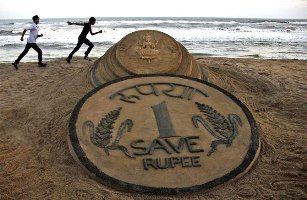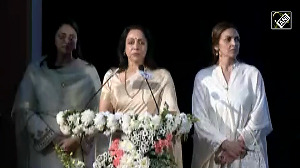 Household financial savings rates continued to remain low, inching up a paltry 10 basis points to 7.2 per cent of GDP in 2013-14 amid sticky inflation.
Household financial savings rates continued to remain low, inching up a paltry 10 basis points to 7.2 per cent of GDP in 2013-14 amid sticky inflation.
Savings in deposits by the households rose, however, to Rs 1 trillion (17 per cent) in the year to Rs 6.91 trillion in FY14 as against Rs 5.91 trillion in 2012-13.
They constituted about 59 per cent of the gross financial savings, of which about 53 per cent constituted bank deposits.
Savings in shares and debentures dropped 22 per cent to Rs 33,700 crore (Rs 337 billion) in FY14, from Rs 43,000 in the previous fiscal, according to a RBI report.
Savings by individuals in MFs (through shares and debentures) saw a 40 per cent drop to Rs 21,000 crore (Rs 210 billion) in the reporting year from Rs 35,000 crore (Rs 350 billion), while savings in currency declined 9 per cent to Rs 1.02 trillion from Rs 1.12 trillion.
Net financial savings of households, which is the gross financial saving minus financial liabilities, rose 13 per cent to Rs 8.19 trillion from Rs 7.22 trillion in 2012-13.
The RBI report said: "The gross domestic savings rate as per central statistics office's estimates declined to 30.1 per cent in FY13 from 31.3 per cent in FY12, mainly on account of a decline in the rate of household physical savings.
"The savings rate dipped to the lowest in the past nine years and has accentuated the macroeconomic imbalances.
“The household savings rate have generally hovered around 23 per cent since FY04."
However, looking ahead, the RBI expressed the hope that the measures announced in the Budget 2015 will help improve both investment and savings.
The Budget has raised the personal income tax limit to Rs 250,000, which will increase disposable income and lead to a rise in investment limit under section 80C of the Income-Tax Act.
It also raised annual ceiling limit in PPF to Rs 150,000, which will also encourage savings and improve financing
The proposal to increase the deduction limit on account of interest on loan with respect to self-occupied house property is also expected to increase households' physical savings.
The RBI has complemented these steps by providing incentives to infrastructure and affordable housing.
The RBI report showed that the net household savings rose to Rs 20,037 billion in FY12, from Rs 18,329 billion in FY11, while gross financial savings of household sector rose to Rs 10,969 billion in FY13, from Rs 9,656 billion in FY12.
It said the physical assets saw a rise from Rs 10,246 billion in FY11 to Rs 12,842 billion in FY12.
However, the financial assets saw a dip of Rs 888 billion during the reporting period, but gross domestic capital formation for households sector rose to Rs 31,415 billion in FY13 from Rs 8,716 billion in FY12.
Household sector increased their investments in deposits in FY13 compared to FY12, to Rs 6,170 billion from Rs 5,490 billion.
Although household savings in commercial banks rose, savings with non-banking finance companies saw a marginal decline, it said, adding that savings in currency and mutual funds declined.
The report notes that following a one-off sharp rise to 25.2 per cent in FY10, the household savings rate declined to 21.9 per cent in FY13.
"This decline was led by a reduction in the household financial savings that dipped sharply from 12 per cent in FY10 to 7.1 per cent in FY13," the report added.
The rate of gross capital formation which indicates investment rate, on the other hand declined for the second consecutive year to 34.8 percent from to 35.5 percent in FY12 and 36.5 percent in FY11.
The sectoral composition of fixed investment shows that private corporates accounted for most of the reduction in the overall investment rate in recent years particularly due to low investments in machinery and equipment.
On the other hand, fixed investments of the public and household sectors, concentrated in the construction sector, remained somewhat less volatile.










